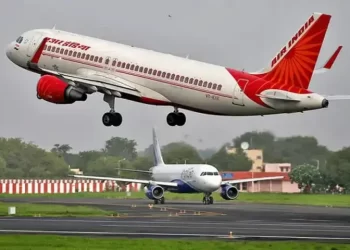HONOLULU (news agencies) — Investigators reviewing the emergency response to last year’s wildfire that killed 102 people on Maui said in a report released Friday they found “no evidence” Hawaii officials made preparations for it, despite days of warnings that critical fire weather was coming.
That lack of planning hindered efforts to evacuate the historic town of Lahaina before it burned, the report said.
A forecaster with the National Weather Service emailed fire managers an “unprecedented advance warning” on Aug. 4, 2023, of the danger that would develop on Aug. 8, including extreme winds as a hurricane passed far to the south, according to the report released by the state attorney general.
But in the ensuing days, the report found, there is no evidence that key agencies — the Hawaii Emergency Management Agency, Maui Fire Department, Maui Police and others — developed plans for dealing with severe wildfire risk, such as by having extra staff on duty, stationing emergency vehicles or supplies in high-risk areas, or plotting possible evacuations.
“The strongly worded nature of the email, had it been communicated to fire managers in other states with better developed severity preparedness strategies, could have gained attention and prompted discussion and operational planning,” the report said. “It was a call for State of Hawaii fire managers to prepare for the impending extreme weather.”
The heroic efforts of firefighters and police — who risked their lives sprinting door to door to warn residents to leave — were undercut by the lack of planning as the deadliest U.S. wildfire in a century destroyed thousands of buildings.
“This investigation serves as a wake-up call for the state and county governments to learn from the past and urgently prepare for the future,” Attorney General Anne Lopez said in a statement.
Maui’s mayor said the report will help Maui respond to future disasters and save lives.
“The County remains committed to a transparent and thorough investigation that will help us identify and implement best practices,” Mayor Richard Bissen said in a statement.
The Hawaii Emergency Management Agency didn’t immediately respond with comment.
Maui fire commanders discussed the forecast, but “no evidence of pre-event preparedness plans by the MFD were produced,” the report said. The police and fire departments never established a unified incident command post or action plan, and as a result it was more difficult to know who was responding to what, where to direct resources, or which evacuation routes were blocked by downed trees or power lines.
The departments share a mobile command vehicle, but the county did not provide evidence that it was used that day, the report said. Some emergency vehicles didn’t have equipment for clearing roadblocks.
Hawaiian Electric Co. has acknowledged that its power lines caused a fire the morning of Aug. 8. Firefighters who responded believed they had extinguished it. But, the report notes, they had limited access to the area due to steep terrain and unstable power lines overhead, making it difficult to determine if the fire was truly out.
The fire that destroyed Lahaina later that day ignited in the same area. Maui County’s report on the cause of the catastrophe has not been released.
With multiple fires burning on Maui that day, police focused on routine duties like traffic control rather than preparing for an evacuation, the report said. The police and fire departments operated separately, hindering communication as winds toppled utility poles, cutting power and cell service.
Maui County and the state use private contractors to help fight fires with water tankers and heavy equipment. But those contractors weren’t trained to use portable radios, and with cell service down many had to communicate with firefighters in person. Firefighters had to flag down water tankers to ask them to fight fires. Some hydrants failed as the fire melted water lines.
Maui Fire Department policy requires backup relief engines to be ready to respond to an emergency. But some lacked breathing equipment and portable radios, the report said. Personnel at fire stations spent valuable time locating and loading hoses, nozzles and hand tools.
And despite the warnings, the heads of the county emergency management agency and the Maui Fire Department were off-island that day, attending conferences in Honolulu. The report said no one appeared to be in charge of strategic resource allocation.
Some of the challenges facing officials and residents were particular to Hawaii and Maui: narrow roads clogged with parked cars and private dirt roads blocked by gates.
Many older, wooden homes were separated by less than 6 feet (1.8 meters), and residents frequently left windows open, making it easier for the fire to spread.








